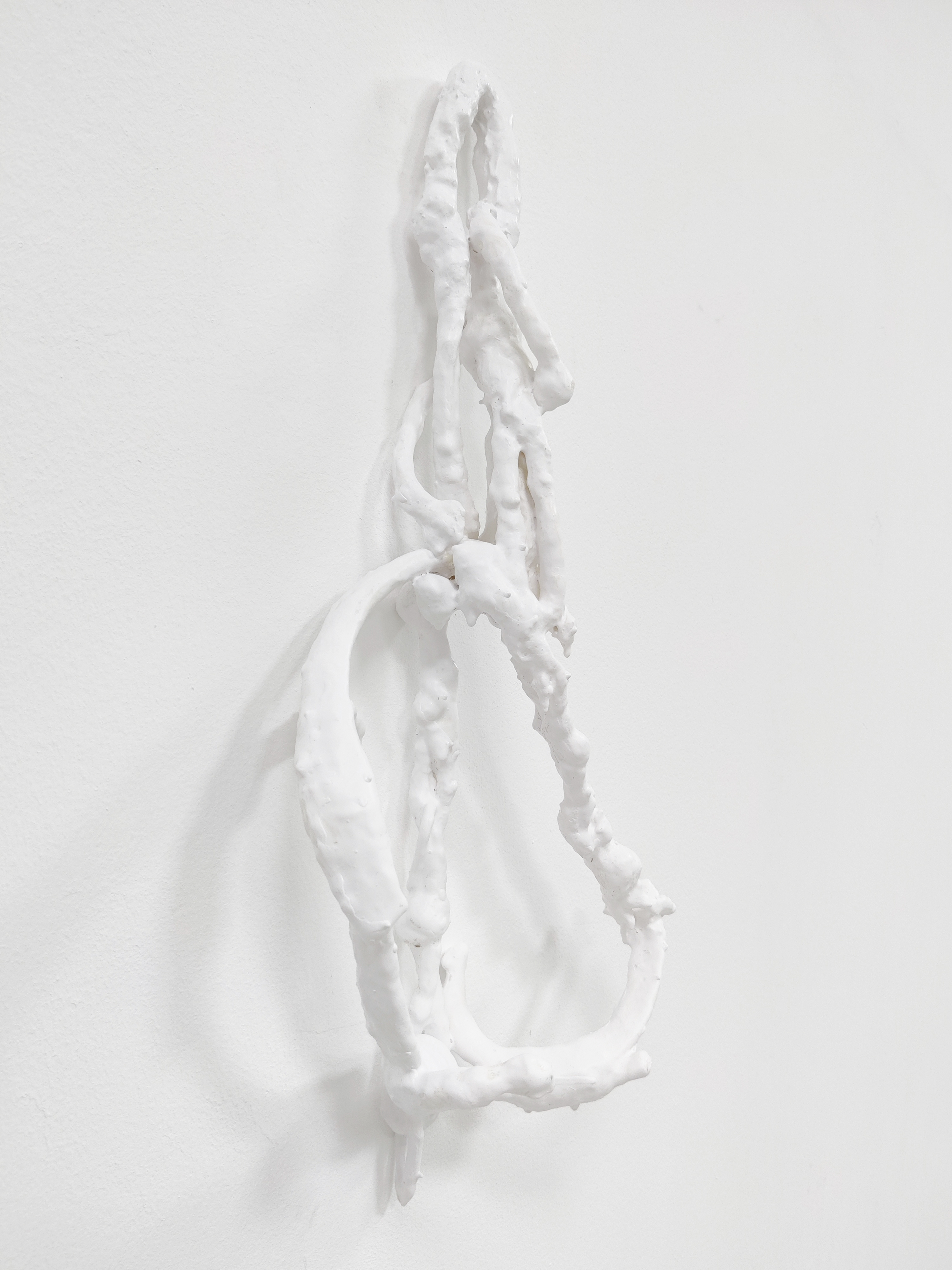3 minutos, 3 días, 3 semanas
Proyecto de investigación
2022
3 minutos, 3 días, 3 semanas
Según los estándares humanos somos capaces de sobrevivir alrededor de 3 minutos sin
respirar, 3 días sin beber y 3 semanas sin comer.
Este proyecto nace de una experiencia personal, de la constatación de que ciertas dolencias y
malestares corporales tienen un origen psicológico. Manuel Minch reflexiona sobre las
limitaciones individuales y los estados latentes en nuestros cuerpos ante los retos que hemos de
asumir día a día. Incide especialmente en el estado de ansiedad que la gestión del tiempo provoca
en una sociedad hiper productiva como la nuestra, haciendo que el individuo somatice el estrés y
acumule disfunciones, deformaciones y tics que desgastan y maltratan al cuerpo.
En un interesante juego de relaciones y metáforas, realiza una serie de piezas con materiales y
técnicas vinculados a la medicina, la construcción y la escalada, que se explicita a través de la
construcción de curiosos rocódromos (símbolo de la superación de los límites) cuyos apoyos
están compuestos por reproducciones en 3D de órganos del propio artista.
El grueso de la exposición está formado por representaciones de diferentes órganos y partes del
cuerpo: tórax, pulmones, estómago, costillas, huesos, pulmón... Están fabricados con cuerdas,
escayola, vendas, sal e impresiones 3D, con un acabado blanco prístino que mistifica el origen
carnal y sangrante que se le suponen a los órganos que estructuran los cuerpos. Resulta creativo
relacionarlo con ese cuerpo sin órganos de la utópica visión de Artaud: “Cuando le haya dado un
cuerpo sin órganos, /entonces lo habrá liberado de todos sus automatismos y devuelto a su
verdadera libertad”. Deleuze lo recogía en su análisis de los cuerpos intensivos de Francis Bacon:
“el espíritu es el cuerpo mismo, el cuerpo sin órganos”. En un acto que podría considerarse
catártico, incluso chamánico, Minch siente la necesidad de sacar los órganos del cuerpo,
reproducirlos simbólicamente y mostrarlos. Los descontextualiza, los desvirtúa, los “extrae” de su
envoltorio natural y los muestra teatralizados para que nos cuenten algo, para interrogarnos, para
poner en cuestión las presiones a las que están sujetos. Como ya vaticinó Joseph Beuys en su
instalación de 1976, solo “mostrando la herida” es posible su curación. Y esta es una herida
sistémica y universal que, sobre todo en las ciudades, se extiende como la pólvora.
Texto: Lidia Gil
3 Minutes, 3 Days, 3 Weeks
According to human standards, we are capable of surviving about 3 minutes without breathing, 3 days without drinking, and 3 weeks without eating.
This project arises from a personal experience, from the realization that certain ailments and bodily discomforts have a psychological origin. Manuel Minch reflects on individual limitations and the latent states in our bodies in the face of the challenges we must tackle daily. He especially focuses on the state of anxiety that time management provokes in a hyper-productive society like ours, causing individuals to somatize stress and accumulate dysfunctions, deformities, and tics that wear down and mistreat the body.
In an interesting play of relationships and metaphors, he creates a series of pieces with materials and techniques linked to medicine, construction, and climbing, explicitly shown through the construction of curious climbing walls (a symbol of overcoming limits) whose holds are composed of 3D reproductions of the artist's own organs.
The bulk of the exhibition consists of representations of different organs and body parts: thorax, lungs, stomach, ribs, bones, lung... They are made with ropes, plaster, bandages, salt, and 3D prints, with a pristine white finish that mystifies the fleshy and bleeding origin presumed for the organs that structure bodies. It is creative to relate it to that body without organs from Artaud's utopian vision: “When you have given him a body without organs, /then you will have freed him from all his automatisms and restored him to his true freedom.” Deleuze included this in his analysis of Francis Bacon's intensive bodies: “the spirit is the body itself, the body without organs.” In an act that could be considered cathartic, even shamanic, Minch feels the need to extract the organs from the body, reproduce them symbolically, and display them. He decontextualizes them, distorts them, “extracts” them from their natural wrapper, and shows them theatricalized to tell us something, to question us, to challenge the pressures they are subjected to. As Joseph Beuys predicted in his 1976 installation, only “by showing the wound” is its healing possible. And this is a systemic and universal wound that, especially in cities, spreads like wildfire.
Text: Lidia Gil









